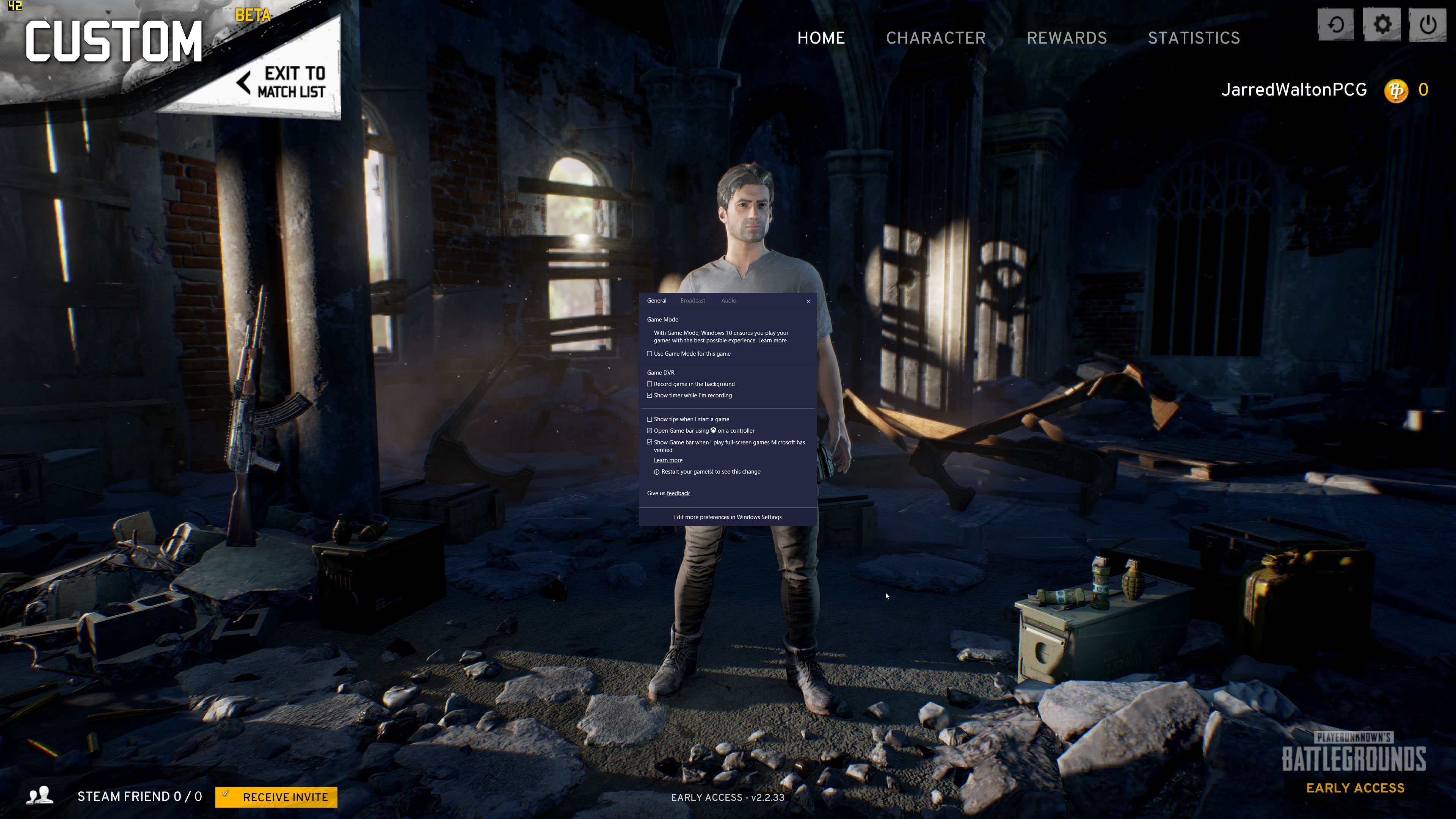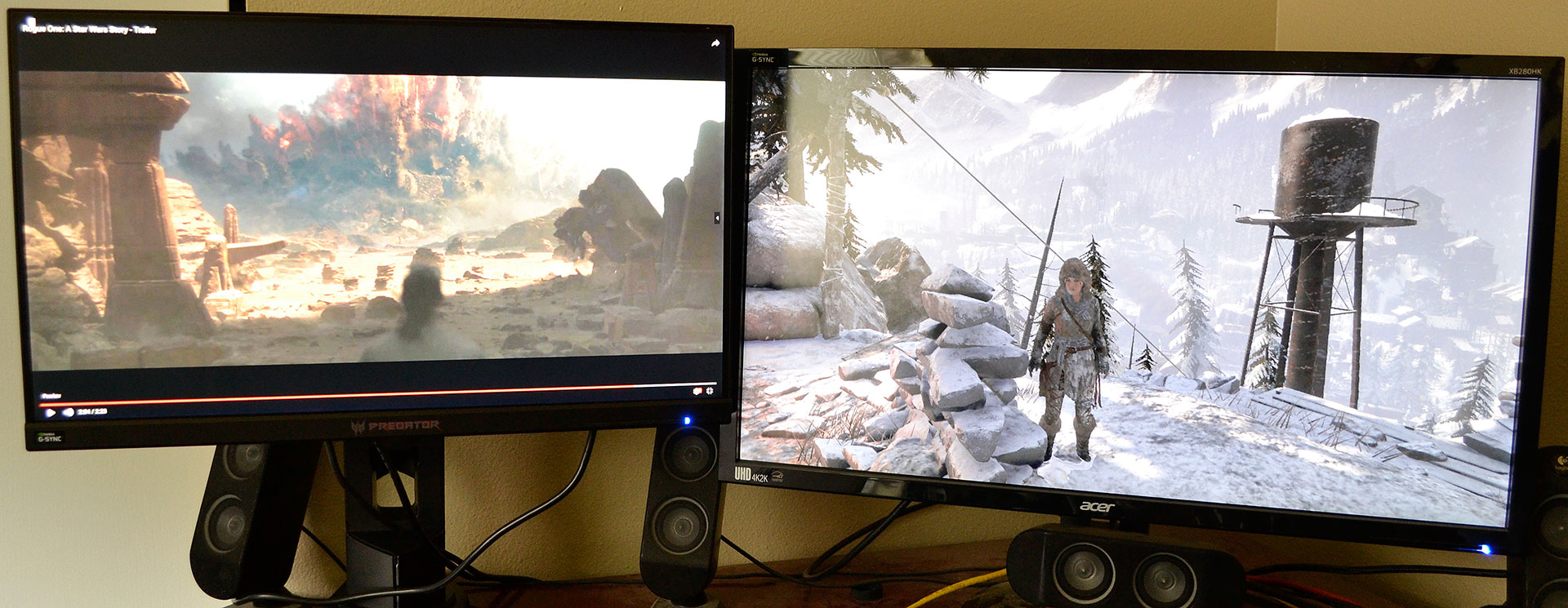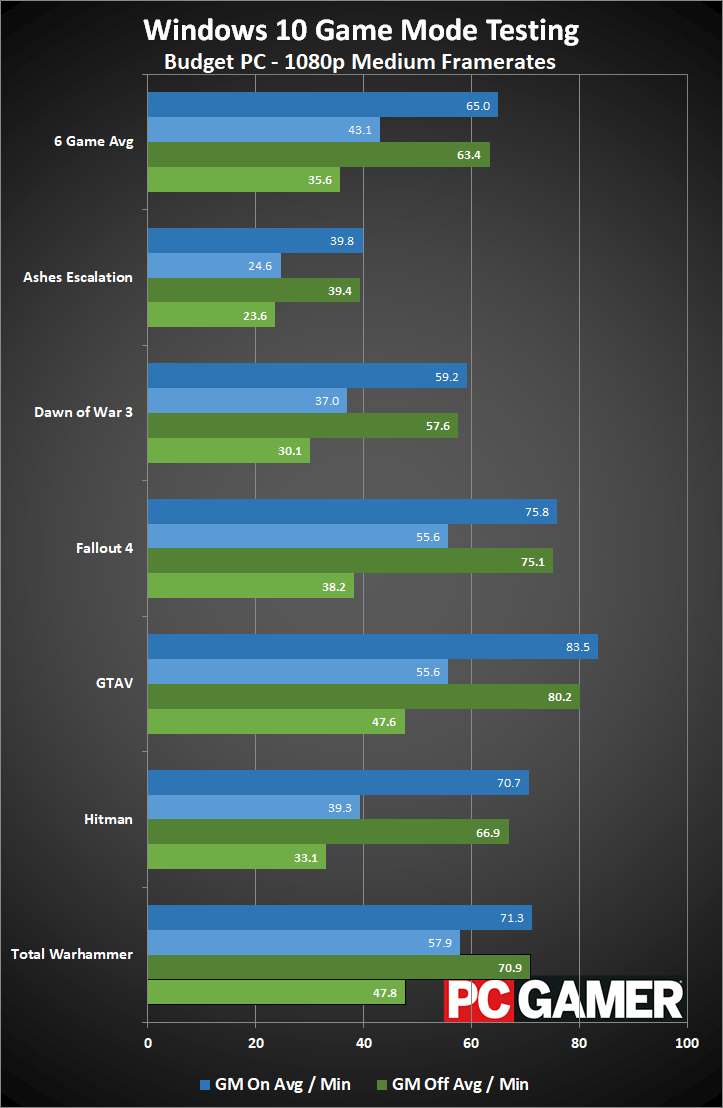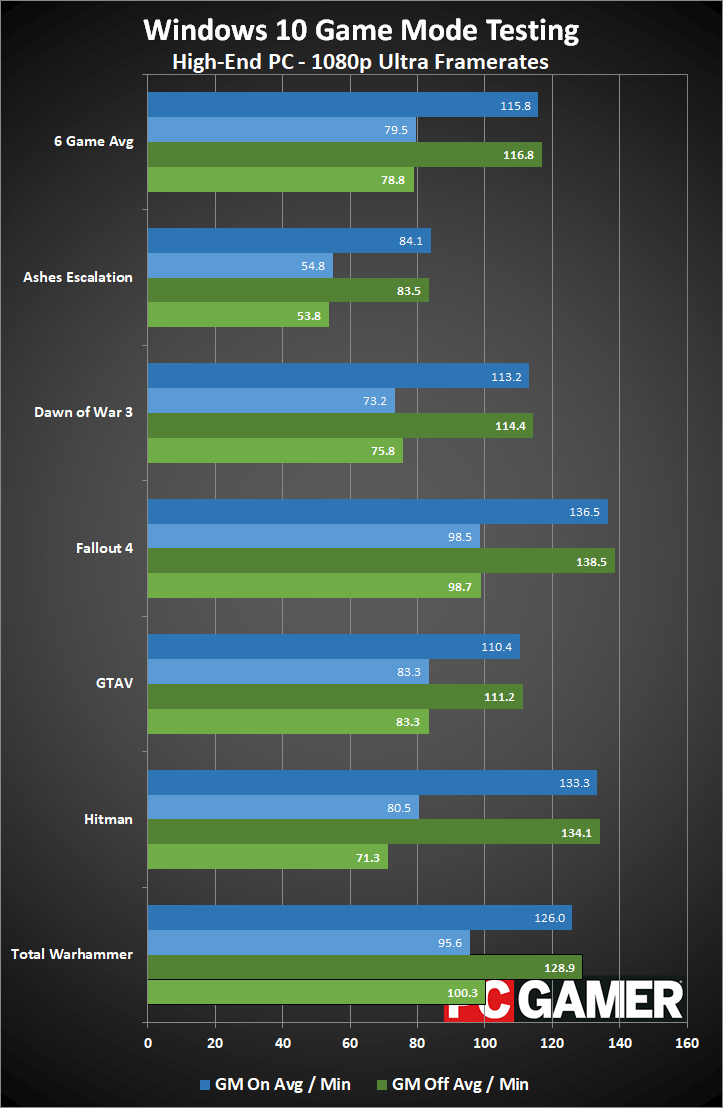What Is Windows Game Mode
Windows ten Game Mode tested: skillful for minimum fps, bad for multitasking

One of the new features introduced with the Windows 10 Creators Update is Game Style, which supposedly provides a improve and more than consistent gaming experience by altering the resource allotment of hardware resources when a game is running. That may audio interesting, but in my before testing I found picayune to no do good—and a few cases where Game Way actually dropped functioning. Of course that was with an Insider Preview build, and then the public release of the Creators Update ought to be better, correct?
Turns out, the uncomplicated answer is that it's not essentially dissimilar from what I saw before. In near cases, the changes are pocket-sized and would go unnoticed. But that's if I'g doing my normal matter while playing games: I close whatever unnecessary applications sitting in the background and basically complimentary upwards resources so that the game volition run also as possible. Game Mode in theory works best when yous don't take such measures and simply let the Bone handle the dirty work.
Windows does all of this already, and information technology has been doing so for decades. Information technology'south called multi-tasking, and we're all familiar with the concept by now. All running processes on your PC have a different priority level. Windows has 6 priorities: low, beneath normal, normal, above normal, high, and realtime. Most processes launch at 'normal' priority, which ways the OS volition care for them relatively equally. A process running at a higher priority will get more resources than lower priority tasks, just it will only get those resources if it needs them—so a loftier or realtime priority process that's not doing anything won't bog down your arrangement.
Game Fashion changes things in some fuzzy fashion, allocating specific CPU cores to the game and leaving other cores for the remaining processes, and probable altering priority levels. Microsoft is a chip nebulous on what it's doing right now, and there are 'planned additions' to Game Mode in the future.
Right at present, my testing shows that Game Way has some small-scale benefits on a depression-cease CPU and some disturbing results on a high-end CPU—it killed background video playback on a system that could easily handle playing a game and a video simultaneously with Game Manner disabled.

Setting up Game Way
A quick primer, for the uninitiated. Enabling Game Mode is a two-step process. First you need to turn it on in the Windows Settings area, just yous also need to enable information technology for each game too. To practice this, open the Windows Game Bar (Win+G) with the game running, and bank check the "Use Game Style for this game" box. (FYI, some systems only seem to show the Game Bar if the game is running in borderless window or windowed fashion.) The skilful news is you don't demand to exit and restart the game—the event is nearly immediate.
Here'due south what I did for testing Game Mode this circular. I selected two sets of hardware, a high-cease Core i7-5930K build and a budget Core i3-7100 build. (Note that I had planned on a 'midrange' Ryzen 1600X build to circular things out, but after seeing what happened with the high-end and low-end builds, running more than tests seemed unnecessary.)
Next, I looked at previously compiled results for games and selected those that showed the most benefit from a faster CPU—the thought being that's where Game Mode is most likely to help. I came up with the following listing: Ashes of the Singularity: Escalation (DX12), Dawn of War 3 (DX11), Fallout 4 (DX11), K Theft Auto 5 (DX11), Hitman (DX12), and Total War: Warhammer (DX11). While three of the games back up DX12, Total Warhammer'south implementation isn't useful if y'all're using an Nvidia GPU, so I stuck with DX11.

At present comes the tricky part. I plugged in a 2d display and loaded upwards some extra tasks. I opened Task Manager, Chrome and Border with a few tabs running in each—email, a Google Docs file, and Twitter. Discussion and Excel are open up as well, and a couple of utilities (MSI Afterburner and HWiNFO64) are active. None of this makes as well much of a deviation, then I opened Firefox and loaded up a 1080p60 YouTube video for skilful measure.
Game Mode results
The above doesn't cause whatever problems during routine PC use, just what happens when you start playing a game? On the Core i3 budget build, things went south quickly in most games—not necessarily for the game, merely the YouTube video started dropping frames and was clearly compromised, and gaming functioning started stuttering a chip every bit well compared to running lean and clean. On the high-end PC, equally y'all would expect given the hardware, everything connected to run more than or less business equally usual.
For each game, I selected some reasonable settings (1080p medium for the upkeep organisation and 1080p ultra for the high-end PC), and tested with and without enabling Game Manner.
Here are the with/without Game Way results for the six tested games beyond two systems.


The budget PC clearly shows some advantages to enabling Game Fashion, right? I mean, look at the minimum fps results—the 97 percentiles are amend than before on most games, and in some cases minimum framerates are 20-30 percent higher. The high-terminate PC doesn't do as well, with iv games showing almost no modify, Hitman showing a moderate benefit to minimum fps with Game Manner, and Total Warhammer showing a slight drop in minimum fps.
If that was the whole story, at least I could come away saying Game Way tends to help a scrap with PCs that are struggling to maintain framerates while doing other moderately circuitous background tasks (like watching a YouTube video). The problem is that there's a second part to what'due south going on, specifically what happens to the video playback on Youtube.
On the i3-7100 and GTX 1050 Ti, without Game Mode the Youtube video starts to stutter a bit in some games, more than severely in CPU intensive games like Ashes: Escalation. It's a workload that's too much for the PC to handle already, simply turning on Game Mode takes the video from stuttering to end-movement playback. The audio didn't drop out, just the video would prove a single frame for seconds at a time. In either example, I wouldn't recommend streaming an Hd video on a budget system while gaming (unless it'due south a very lightweight game).
What you might not expect is that Game Mode has a similar though lessened impact on the loftier-end i7-5930K and GTX 1080. Without Game Way, the video plays without any serious bug, simply turning on Game Fashion causes stuttering and occasional long freezes in all the games I tested. So while Game Mode might help gaming consistency in certain situations, information technology does then at the cost of background chore consistency.
By tweaking the resource allocation to favor games, Game Way tin prevent background tasks from using otherwise idle cycles.
None of this is particularly shocking. Windows has had decades of practice at tuning job scheduling, and the various priority levels are ordinarily sufficient—provided you have enough hardware to throw at a problem. If playing a video uses 10 percentage of your CPU, and playing a game uses l percent of your CPU, you tin can likely practice both tasks at the same time without running into issues. Just if playing a game uses 75 percent of your CPU and the video playback or other tasks can utilize 35 percent of your CPU, there's no magical software solution that will let both tasks to run without some course of compromise.
On the i7-5930K, something is clearly incorrect.
By tweaking the resources allotment to favor games, Game Mode tin forbid background tasks from using otherwise idle cycles. Microsoft didn't go into specifics, but suppose Game Mode reserves all merely one CPU cadre for the game. That's not a bad idea on a dual-core or maybe even quad-core CPU, but with a six-core processor it's unnecessary.
I'chiliad not sure if that's what's happening, but whatever the crusade, Game Manner didn't play nicely with background video playback. With Youtube, that's not such a big bargain. But if one of the groundwork tasks is a video encode for Twitch livestreaming, that's a existent problem.

Of class I've merely tested a scattering of games, on ii hardware configurations. Peradventure in that location'southward some specific combination of hardware and software that will bear witness profoundly improved results with Game Mode. I dubiety it, and a meliorate solution is to shut down unneeded background tasks when playing games—at to the lowest degree if your PC doesn't have enough RAM and processor performance to handle things. Upgrading your PC'south hardware is some other option, but that costs coin. And if y'all're using a PC infested with malware, definitely take care of that trouble earlier thinking nearly playing games. It's all about priorities.
What Is Windows Game Mode,
Source: https://www.pcgamer.com/windows-10-game-mode-tested-good-for-minimum-fps-bad-for-multitasking/
Posted by: walkerbeeks1962.blogspot.com


0 Response to "What Is Windows Game Mode"
Post a Comment